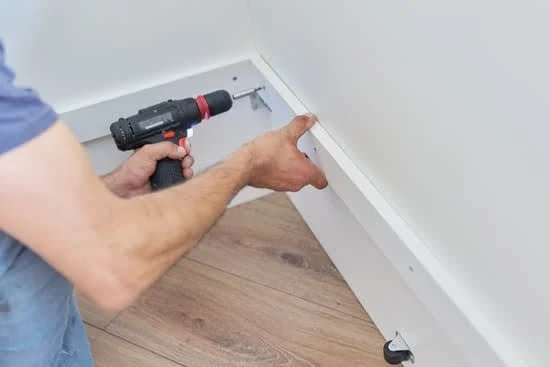Introduction to Woodworking Joints
Mastering the art of woodworking joints is vitally important for any skill level of woodworker, as it allows them to join pieces of timber together and form a sturdy structure. With a range of different types of joints available, it enables the woodworker to construct furniture, cabinets and other useful items with ease. Different types of woods have different natural tendencies that need to be taken into account when selecting which type of joint will work best for any particular project. The selection, preparation and assembly of the components must all be done in accordance with accepted standards and techniques to ensure the finished product is strong and durable.
Common Types of Woodworking Joints
Mortise and Tenon Joint: The mortise and tenon joint is one of the most commonly used woodworking joints in furniture making. It consists of two parts: the mortise which is a rectangular hole cut into the end of a piece of wood, and the tenon which is an extension that fits into the mortise. The advantage of this joint is its strength and durability, as it creates a solid connection between two wooden pieces or components. This type of joint is often used for making frames, cabinets, tables, chairs, and other furniture with interlocking features.
Dovetail Joint: A dovetail joint is another type of woodworking joint that has been used since ancient times to join two pieces of wood securely. This joint consists of pins (or “tails”) cut on the end of one piece that fit into corresponding slots (called “ports”) cut into the opposite piece. Not only does this create a strong bond between the two pieces but also gives them an attractive appearance as well. Dovetail joints are commonly used to join box sides together and also to attach drawer fronts onto drawers.
Rabbet Joint: A rabbet joint is formed by cutting along both edges of one side of a board so that it can be joined securely to another board or component. This type of jointis frequently used when joining boards edge-to-edge in constructional works such as cabinets and panels because they offer good resistance against shearing forces due to their extended depth. Rabbet joints are also ideal for extending paint-holding capacity on door casings.
Pocket Screw Joints: Pocket screw joints use specialized screws and jigs to join two pieces together with strong glue bonds for extra strength. This type of woodworking join offers quick setup, adjustable tensioning, and excellent strength regardless of changes in humidity or temperature variations. The pocket screw is great for complex projects that require intricate detailing or precision alignment such as kitchens, bookshelves, countertops, etc., as well as everyday repairs such as furniture making & carpentry work.
Advantages of Using Different Joints
Dovetail joint: Dovetail joints are commonly used in cabinets and furniture. They are extremely strong, made up of interlocking wedge-shaped projections (or “tails”) that fit into slots (or “pins”). The angled elements make them difficult to pull apart even after glue is applied, making this type of joint one of the strongest choices for creating a permanent bond between two pieces of wood.
Mortise and Tenon Joints: Mortise and tenon joints are widely used in cabinet making because they create a very sturdy connection. This type of joint consists of a set of sockets or mortises cut into one piece of wood, which fit together with a sectioned tongue-like shape known as the tenon on the other piece. The strength of the joint is determined by how snugly the two pieces fit together, with additional strength added when glue or dowels are used as well.
Pocket Hole Joints: Pocket hole joints offer a fast alternative to traditional methods for joining together two pieces of wood without special tools or intricate cuts. This type of join is created by drilling through an angle into one piece and then driving screws directly into it to secure the other. While not always as strong as some other types, this method requires minimal labor and can be easily changed should adjustments be needed down the line.
Tips for Choosing the Right Woodworking Joint
When selecting a woodworking joint, it’s important to consider the environment and conditions the joint will be exposed to. For example, if you plan to use the joint outdoors, you’ll want a more durable joint that is less likely to degrade due to weathering or moisture. It’s also important to think about how much movement or stress the joint will experience. If the connection between your two pieces of wood requires a lot of strength and stability, a strong corner, drawbore, or tenon joint may be best. On the other hand, if you need less structural integrity but still want an attractive appearance, then biscuit joints are perfect for alignment and added bulk. Additionally, when deciding on which woodworking joint is best for your project, take into account the type of wood being used and its strength when determining which joint would provide optimal support. While some joints require more skill or specialized tools (dovetail or mortise & tenon), they tend to provide reduced movement in furniture assemblies and create lasting connections between two matching surfaces.
Conclusion
Woodworking joints are essential for creating strong, durable furniture pieces. There are many types of woodworking joints to choose from such as dowels, biscuits, mortise and tenon, butt joint, lap joint, miter joint, and dovetail joint. Each type offers its own advantages in terms of the strength and stability they provide. When selecting a woodworking joint to use on your project it is important to consider the different characteristics that each offers as well as the load-bearing capacity of each. With proper planning and prudent selection of materials and techniques used when constructing these joints you’ll be sure to create a beautiful piece that will serve you for years to come.
Resources for Further Learning
1. WoodArchivist: This website features a wide range of articles and instructional videos on woodworking techniques including types of joints, different tools and equipment, and specialized techniques.
2. The Wood Database: This comprehensive database provides detailed information on every type of joint with specific instructions, as well as guides on using and maintaining tools.
3. Popular Woodworking Magazine’s Jointery & Making Joints eBook: This ebook goes into greater detail regarding the various types of joints, their use in furniture making, methods for cutting them accurately, and how to strengthen them with gluing and fasteners.
4. Essential Joinery for Furniture Making (Book): Suitable for both novice and experienced woodworkers alike, this book contains step-by-step illustrated instructions on how to make more than 45 strong woodworking joints fit for any purpose or project.
5. GetWoodWorking’s YouTube Channel: This channel focuses solely on woodworking topics and offers a selection of joint tutorials with voiceover explanations from experts in the field.

Hi everyone! I’m a woodworker and blogger, and this is my woodworking blog. In my blog, I share tips and tricks for woodworkers of all skill levels, as well as project ideas that you can try yourself.





